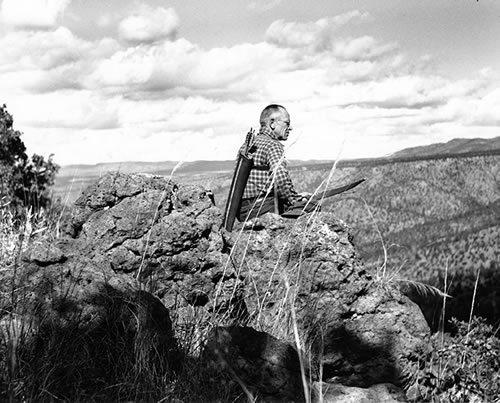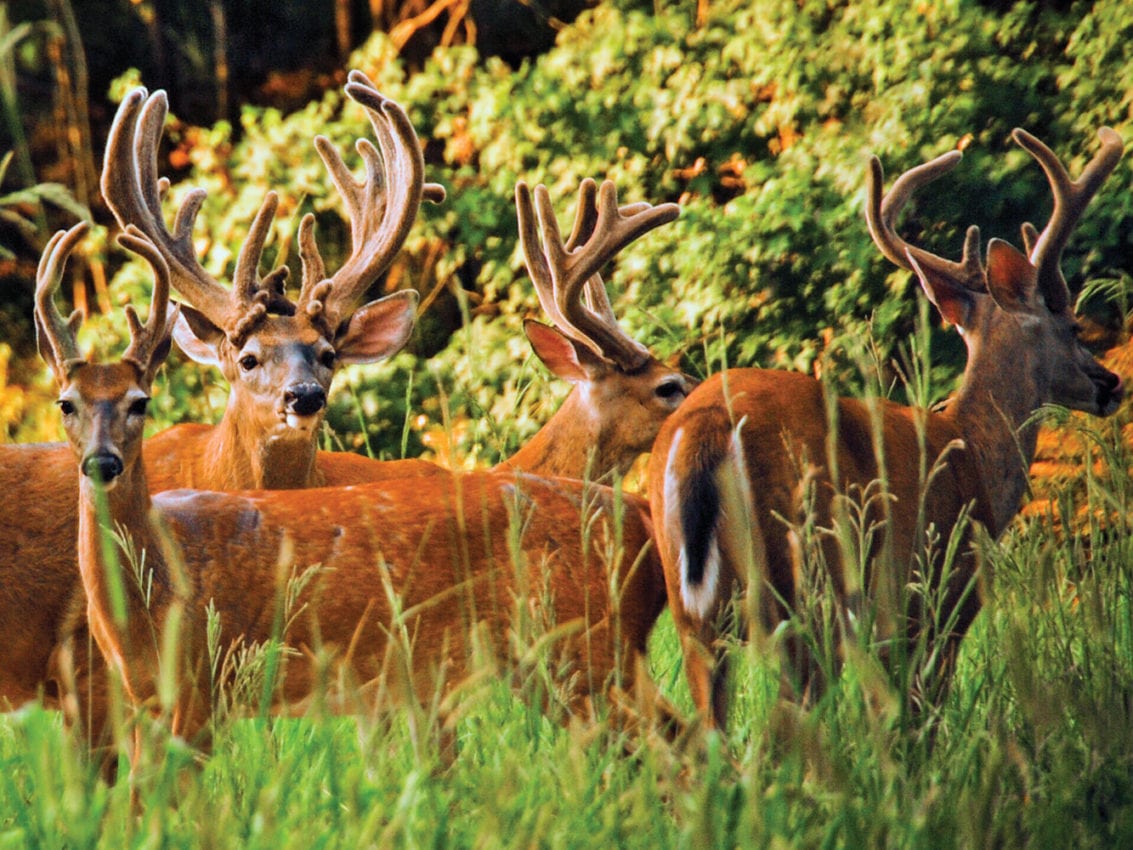Rural property purchased in the eastern two-thirds of Texas will likely include a white-tailed deer population. If these deer are not managed, they will often multiply until their food supply is depleted and the habitat is damaged. When their nutrient intake no longer matches their body requirements, fawning success can be compromised. Due to an insufficient diet, bucks antler size may diminish. Often people are unaware of the consequences in failing to exercise responsible habitat stewardship.
The late Dr. Larry Stoddard often began his first lecture in Range Ecology 101 at Utah State University by saying, “Gentlemen, we will talk a lot about climax communities in this class. A climax community is an ecological community where populations of plants and animals remain stable and exist in balance with each other and their environment. We will discuss how to move range plant communities toward climax, but it is a goal that cannot be obtained.
“The Garden of Eden was a climax community, but that all changed when Eve fed Adam the forbidden fruit. Every since that event, man has worked diligently to provide himself and his family with food, clothing, a climate controlled home, an automobile and other desired goods. Man in his efforts to satisfy his needs and wants, moved natural communities away from climax. As long as humans live on this earth in great numbers, climax communities cannot occur.”
What is the answer to this dilemma? Without our technologies and management skills, the world would be unable to feed our current populations of animals and people. We must continue to learn, improve and use the skills, necessary to help our ecological systems maintain themselves.
Habitat requirements for white-tailed deer and other wildlife include food, water, cover and space. Land managers need to understand how to provide and maintain these requirements.
Leopold’s Tools
Aldo Leopold (1887- 1948), considered as the father of wildlife management in America, listed five tools used to destroy wildlife habitat and stated that these same tools can be used to restore and maintain it. Leopold’s list included the ax, cow, plow, fire and gun.
“The ax symbolizes brush control which can be accomplished with a variety of tools, including both mechanical and chemical,” says Steve Nelle, Range Conservationist and Wildlife Biologist, who retired from the United States Department of Agriculture National Resources Conservation Service (USDA-NRCS). “Base your brush control tool decisions on your specific goals for the ranch, giving strong consideration to the amount of brush to be removed, removal pattern, and method to be used. A few of the options are mechanical grubbing, roller-chopping, dozing, aerial spraying and individual plant treatment with herbicides.”
“Good deer habitat contains a diversity of woody plants (brush or browse), forbs (broad-leaf weeds) and grasses,” Calvin Richardson wrote in Texas A&M AgriLife Extension Service bulletin E-129. “A variety of food plants allow deer to select high quality forages throughout the year. The greatest forage supply for deer occurs before trees become large enough to out-compete herbaceous plants for sunlight, water and minerals. This is the reason that appropriately conducted brush management tends to increase deer forage availability.”
“Cover is also a vital component of deer habitat,” Richardson continues. “Brush provides cover for escape, shade and protection against weather extremes. Habitat with interspersed brush mottes (islands) and open feeding areas are far more valuable than habitat with a single large feeding area adjacent to a large tract of brush. The interspersion of food and cover provides an edge effect where two or more vegetation types meet and integrate. The significance of edge is that this region often provides a greater diversity of food plants and cover types to meet deer habitat requirements. Mosaic brush treatment patterns, which follow contours of the land and certain vegetation or soil types, provide the greatest amount of edge and appear to be the most beneficial to deer. This type of brush control is known as brush sculpting.”
 Leopold listed the cow as the second habitat management tool. Properly managed cattle grazing can improve wildlife habitat by increasing plant diversity. The cow’s diet is primarily grass whereas a deer prefers forbs, browse, and mast (nuts and fruit). When you remove cattle from the habitat, a monoculture of grass can develop and crowd out the forbs that deer depend upon for a major portion of their diet.
Leopold listed the cow as the second habitat management tool. Properly managed cattle grazing can improve wildlife habitat by increasing plant diversity. The cow’s diet is primarily grass whereas a deer prefers forbs, browse, and mast (nuts and fruit). When you remove cattle from the habitat, a monoculture of grass can develop and crowd out the forbs that deer depend upon for a major portion of their diet.
The plow is used to plant food plots when it’s necessary to help deer survive cold winters and long, hot summers. Food plots can be used to increase nutritional quality and quantity of available forage; however, food plots should never be used as a substitution for poor habitat or to sustain an over-populated deer herd. If food plots are to be successfully established, they must be incorporated into a good management plan and be necessary for accomplishing sound management goals.
Fire, another tool listed by Leopold, is one of the oldest weed and brush control agents available to man and is an integral part of grassland ecology. Prior to range and wildlife habitat management by stockmen and wildlife biologists, nature controlled plant species diversification with fire lit by lightening. Prior to settlement of the United States by European immigrants, American Indians set fires to the range to destroy invading woody plants and to enhance grass production for buffalo. When people began to build communities in our country, they developed fire prevention programs to protect their homes and other assets and quickly organized to extinguish wild fires when they occurred.
As land managers began to recognize and understand the negative effects on range resulting from the absence of fire, research was initiated to learn how to use controlled fires as a habitat management tool. The concept of prescribed burning was developed to help achieve a number of management objectives which include control of unpalatable forbs, grasses, and brush seedlings; removal of excessive mulch and debris; control of certain parasites and pests; improved nutrient cycling; and stimulation of new growth of forbs and brush. According to Nelle, fire can improve browse nutrition by increasing protein, TDN (energy), and mineral content by two to three percent.
The gun is a required management tool to control and manage deer populations so they don’t overwhelm their habitat carrying capacity. Nelle says that deer can destroy their own habitat if their numbers are not controlled.
Newer Management Tools
“Additional management tools have emerged since Leopold’s time,” states Nelle. “A prime example of a new tool since Leopold’s time is high fences.”
High fence, 7½ feet or higher, is made of net wire and will restrain deer, exotics, and livestock. As a management tool, high fence aids the land manager in the improvement and maintenance of deer habitat and control of deer numbers. A high fence prevents the ingress of excess deer from neighboring properties and egress of good quality deer. Conversely, if improperly managed, high fences can also lead to habitat damage if deer or exotic populations are not controlled.
Selective deer breeding in a permitted facility also became a management tool after Leopold’s time and began as a novelty with the concept being created to satisfy a curiosity about the animals. Land managers wanted to learn more about deer – their behavior, diet and reproduction. The practice of deer breeding developed into an opportunity to improve deer genetics by mating selected does with bucks exhibiting desired traits. Improved genetics can improve antler size and animal vigor and produce animals that have a good chance of surviving in the wild. Deer breeding can only be conducted with a breeder’s permit issued by Texas Parks and Wildlife.
“Tools are neither good nor bad,” Nelle says. “It is the skills by which they are used that determine whether they improve or destroy habitat.”
Information and advice on using the right tool at the proper time to successfully manage deer and their habitat can be obtained from many sources such as Texas A&M AgriLife Extension Service, Texas Parks and Wildlife, private consultants and other successful deer managers. Another good way to learn about deer management is by joining the Texas Deer Association. Their members’ primary goal is to care for deer with improved habitat, nutrition, herd health and genetics.
This article was originally published in Lands of Texas Magazine, a Lands of America print publication. Subscribe here today!
